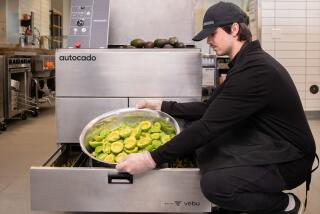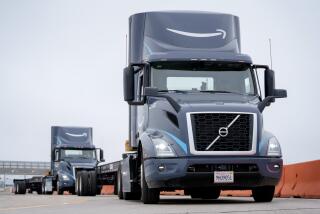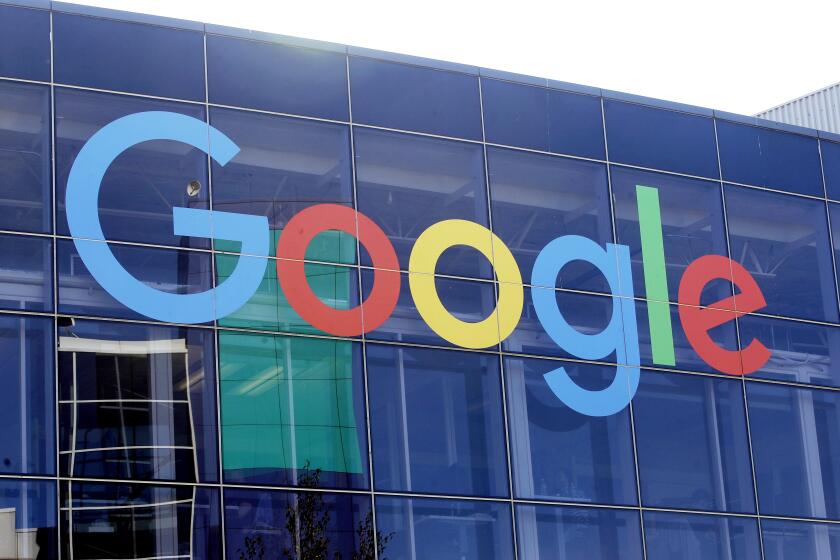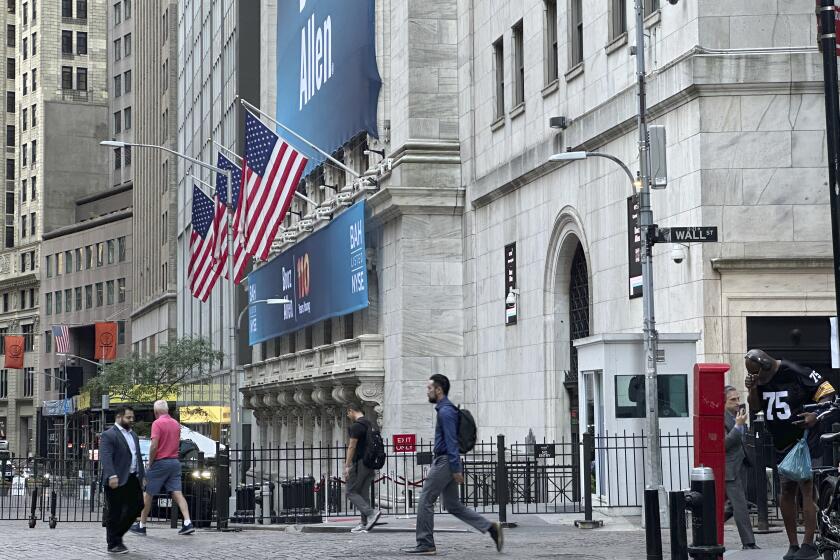Army of Amazon robots ready to help fulfill orders on Cyber Monday
- Share via
Reporting from Tracy, Calif. — This holiday season, Amazon’s little helper is an orange, 320-pound robot called Kiva.
The robots -- more than 15,000 of them companywide -- are part of Amazon’s high-tech effort to get orders to customers faster. By lifting shelves of Amazon products off the ground and speedily delivering them to employee stations, the robots dramatically reduce the time it takes for workers to find items and put them into boxes for shipment.
On the eve of Cyber Monday, Amazon’s year-old warehouse in Tracy, Calif., was buzzing with activity as the retailer prepared for one of the biggest shopping days of the year.
Kiva robots zoomed around the floor with uncanny precision, hoisting shelves containing video games, coloring books and stuffed animals. Yellow bins filled with merchandise zipped by on conveyor belts. A group of employees, some sporting red Santa hats, spent their break doing a series of arm stretches.
Since acquiring robot-maker Kiva, a Massachusetts company, for $775 million in cash in 2012, the e-commerce retailer has been increasingly implementing automation at its gargantuan fulfillment centers. Kivas, which resemble overgrown Roombas, are capable of lifting as much as 750 pounds and glide across Amazon’s warehouse floors by following rows of sensors.
Sunday was the first time Amazon publicly unveiled the Tracy warehouse, which boasts the company’s latest “eighth-generation” fulfillment center technology, including 3,000 Kivas. Ten Amazon warehouses, including two in California, are classified as eighth-generation; Amazon now has 109 fulfillment centers globally.
Dave Clark, Amazon’s senior vice president of worldwide operations and customer service, said that because Kiva-equipped facilities eliminate the need for wide aisles for humans to walk down, eighth-generation centers can hold 50% more inventory than older warehouses. More storage capacity means a wider selection of merchandise, fewer chances of products being out of stock and more possibilities for same-day delivery, he said.
“It’s sort of a virtuous cycle,” he said during a tour of the facility. The robots, he added, have also cut processing times for orders to as little as 13 minutes from well over an hour.
The Tracy center, which is more than 1 million square feet in size and has 1,500 full-time employees, is still not at full capacity. It currently houses 21.5 million items (3.5 million unique SKUs), with plans to increase that number to as much as 27 million items next year. On a peak day -- such as Cyber Monday -- the warehouse ships 700,000 items.
Seattle-based Amazon has been adding new technology to many of its fulfillment centers. Some warehouses utilize Robo-Stow, a 6-ton robot that moves merchandise pallets as high as 24 feet directly onto Kiva robots, and “vision systems” that can receive an entire trailer of inventory in as little as 30 minutes by capturing an image of the trailer’s contents.
Workers at the Tracy facility said they enjoyed the ease of Kiva robots bringing products directly to them, though some conceded they missed walking the former maze of aisles to find products.
Clark declined to discuss the cost of each robot, or how much Amazon spent building the Tracy warehouse. But he noted, “we’re very happy with the economics.”
He said increased automation hasn’t led to reduced staffing levels at newer warehouses because the company continues to grow rapidly.
“That growth is driving increased hiring. We continue to add employees, and no employee has been negatively impacted by Kiva coming on board,” he said. “What we’ve done is automate the walking element. Our focus on automation is to do automation that helps employees do their job in an easier way, in a more efficient manner.”
This holiday season Amazon announced it was hiring 80,000 seasonal employees, 14% more than last year. The company has projected online sales during the fourth quarter to increase 7% to 18% when compared with the same quarter last year.
Last year, Amazon announced that it sold nearly 37 million items on Cyber Monday, or 426 items a second. The company is expecting bigger sales this year and will probably report figures Tuesday.
Follow Andrea Chang on Twitter.







